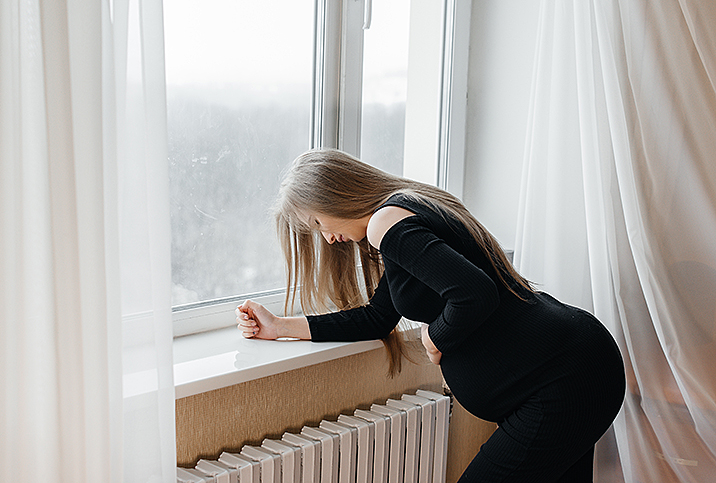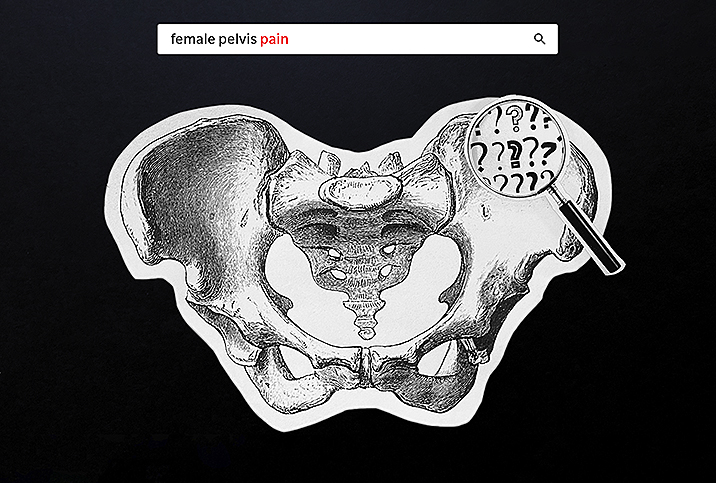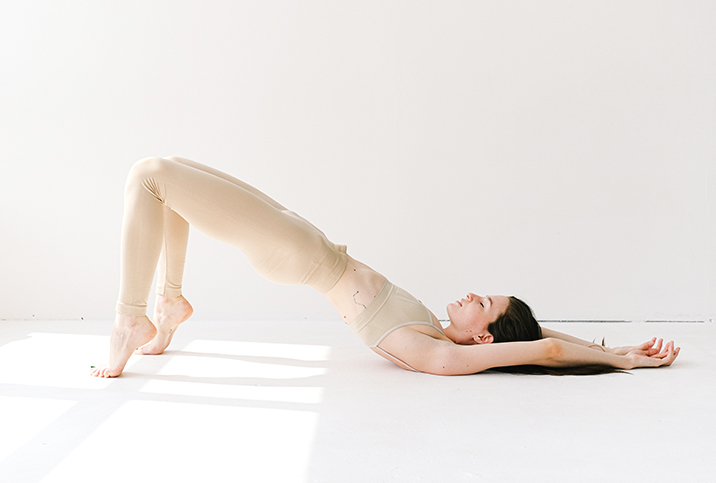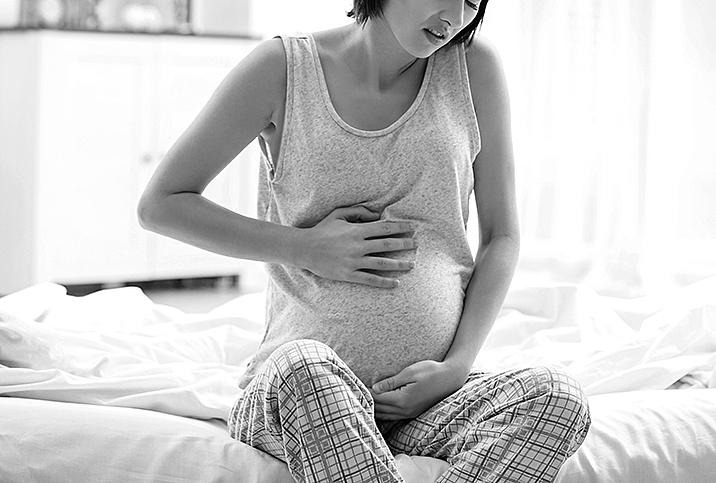Pelvic Girdle Pain Is a Common Yet Underreported Condition

Pelvic girdle pain (PGP) isn't likely something you heard about before becoming pregnant—or even while pregnant. With so many physical changes and symptoms that crop up during pregnancy, it's nearly impossible to keep up with all of them. However, PGP is a widespread condition for pregnant people and it can disrupt your quality of life.
"Data shows that 20 percent of pregnant people consistently report some sort of pelvic pain during pregnancy," said Sara Twogood, M.D., an OB-GYN in Los Angeles and co-founder of Female Health Education, a healthcare company.
"Anecdotally, I think this is a big underestimation and would estimate that about 80 percent of my patients report pelvic pain at some point in their pregnancy," Twogood continued. "Depending on the study, anywhere from 5 to 60 percent or so meet the definition of pelvic girdle pain."
While PGP can occur anytime during pregnancy, it is most prevalent during the second and third trimesters. It is one of the most common musculoskeletal disorders experienced during pregnancy.
While numbers vary, and many cases likely go unreported, research shows that 20 percent of pregnant people experience pelvic girdle pain that is sufficiently severe enough to necessitate medical intervention. Additionally, 33 percent of new mothers report PGP 12 weeks after delivery, and in rare cases, the pain can last for years.
What is the pelvic girdle?
The pelvic girdle is a ring-shaped bone at the base of your spine formed by the coxal bone, or hip bone. The lower limbs are connected to this bone structure, which attaches to the axial skeleton (the bones along your body's axis) by way of the sacrum of the spine.
Due to these attachments, pelvic pain can be felt in the front or back of the pelvis, groin, hips, thighs, knees and lower back. You may feel sharp, stabbing pain or discomfort in these areas or a clicking or grinding sensation in the pelvis. Some people describe the sensation as a "pain in the butt" or mistake it for sciatica. PGP may be underreported because it's grouped with low-back pain when the origin of the pain is unknown.
PGP can range from mild annoyance to severe pain that leads to the need for a walking aid.
"Pain is often achy and worse with certain movements, like getting out of the car. In tough cases, it can be debilitating and make it difficult to walk without pain," Twogood explained.
"Many patients report pain with walking, rolling in bed, walking up/down stairs, getting in or out of a car, and other transitional movements," said Rachel Gelman, D.P.T., a pelvic floor expert at Intimina, a Swedish brand of intimate healthcare products.
Risk factors for PGP
While any pregnant or postpartum person can experience PGP, some factors may increase the risk. Factors associated with pelvic girdle pain include the gestational age—the further along in the pregnancy, the more likely the condition—the number of pregnancies, obesity and depression, Twogood said.
The actual cause of the pain is multifactorial. Gelman explained that preexisting pelvic floor dysfunction and the ligamentous changes that occur due to pregnancy could lead to PGP. Other risk factors include strenuous work, previous low-back pain, shorter maternal height, recently starting oral contraceptives, prior epidural anesthesia and prolonged second-stage labor.
PGP is manageable with healthcare and lifestyle changes
Gelman recommended your first step should be to make an appointment with a pelvic floor physiotherapist to ensure a proper treatment plan. A pelvic floor physiotherapist may recommend different support garments, such as a sacroiliac joint belt or support belt that stabilizes the pelvis. They will give you a professional recommendation on what will benefit you the most.
Another of Gelman's recommendations is to have better bowel movements.
"Constipation is a big cause of and result of pelvic floor dysfunction. Pushing and straining to defecate puts a lot of pressure on the pelvic floor and can lead to issues, including sexual dysfunction," Gelman said. "Putting a step stool under your feet while having a bowel movement puts a person in a squat-like position, which is the best position to poop in and can be helpful for the pelvic floor."
Other suggestions for reducing pain include taking smaller steps or walking sideways, and keeping the knees together to move as a unit when rolling in bed. Holding a pillow between your knees when rolling from side to side in bed or during sleep can provide relief.
Exercise may also help, although modifications should be made to prevent pain. One study suggests the protective role of exercise and found pregnant people who exercised three times or more per week between weeks 17 and 21 of pregnancy were less likely to report PGP.
Seeking the care of a clinician who works with pregnant people is wise. Physiotherapists, chiropractors and osteopaths may be able to provide solutions that help.


















